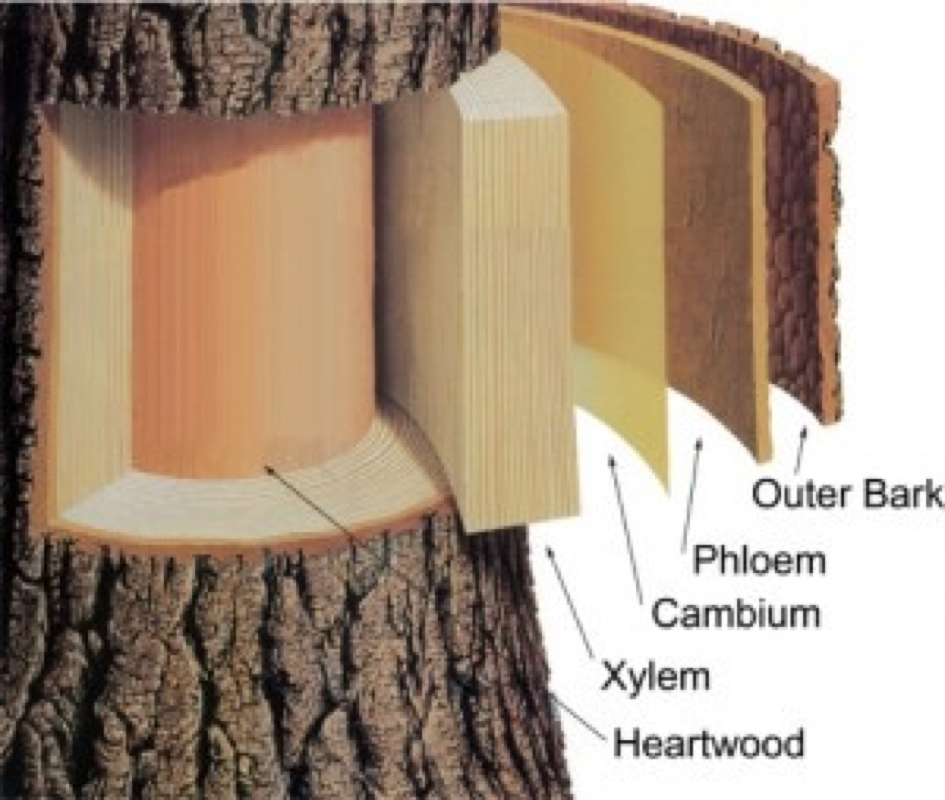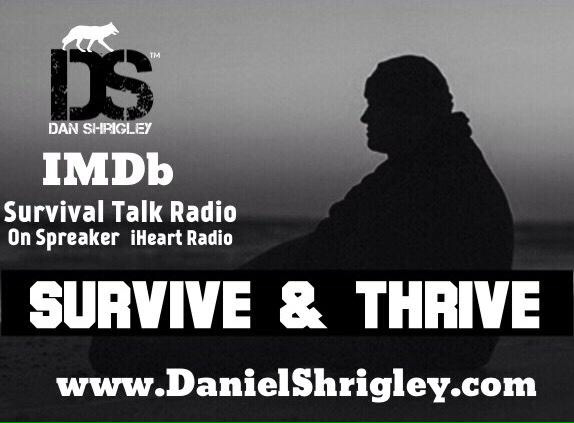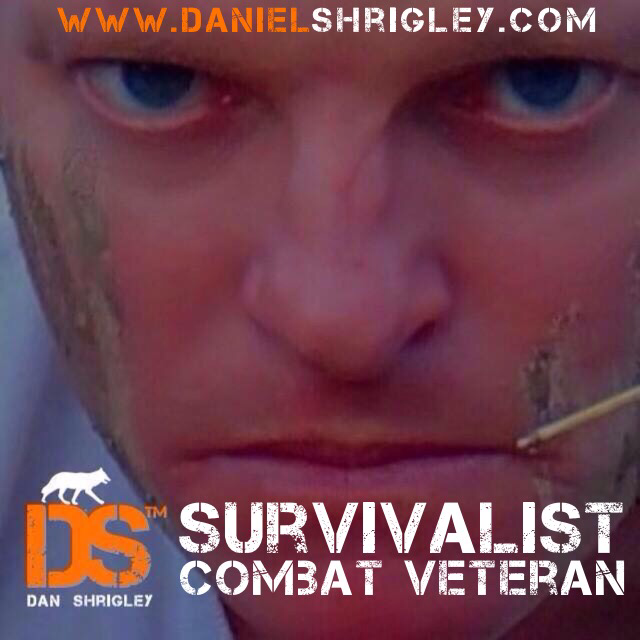Plant Cordage - Useful & easy to fashion30/12/2014 Having simple skills and knowledge of how you use the fiber of a plan and turn it in to usable cordage is a invaluable skill to have. North America is full of plants to fashion together cord and it's easy. Plant fiber types are key to strength in cordage. Plants that typically grow in water, offer this type of strength, desert plants provide great strength too. Plants that make good nesting material are also ones that are excellent for cord, or fishing line. In this posted video I show you how to quickly fashion a cord from a Texas plant that is commonly grown all over the State. Please watch and see how easy it was. There is not a lot of deviation from experts between their opinions on the difference from animal and plant fibers for string, cord, nets and etc. In a survival situation, where speed of self rescue is critical you may not have the time to go hunting for animals or search around for usable litter. You best bet will be to go straight to plants for fibers or cordage. (Remember Tarzan swung from vines, just pointing that out!) Plant fibers like any other gain strength as you add more. With enough you can make it as long or thick as you need it to be to serve it's intended purpose. Survival is a time when time is not on your side. So having a basic knowledge of what uses a plant can offer is a critical part of being prepared. As our corporate motto goes:
Grasses are also a common fiber to use in any environment. Grass stems, dunegrass, reeds, sweetgrass offer strength and are abundant. Yucca, leaves of the agave, iris are a fiber source. You have seen Bear Grylls use the agave to sew together his clothing on an episode of Man vs Wild. He bit the tip pulling the sharp point that had fibers attached, then used it as needle and thread. Yucca must be dried then grounded or pounded to separate the fibers, once done you can you finish by rubbing portions in your hands together. It's important to study the various techniques used for different plants. It's also good advise to learn how to tie, twist or braid cordage. Take it one step further and learn knot tying. All methods are time consuming, but when in a survival situation, knowing what is available to you and what to do with it might save your life. Common animal hides used for their fibers are catgut, sinew and rawhide. But unless you carried it in with you, your going to have to hunt and kill to get those fibers. Plus you will have to dry them and treat them. Common plants and trees that offer fibers are common in the wild and easily identifiable. Roots, bark, whorled milkweed, branches, stems, cottonwood, cattail, spruce, hemp that comes for marijuana plant. (Avoid marijuana it' might be illegal - hemp is not once processed, avoid possession of leaves or buds and seeds) Trees are a great source for cord fibers, use the tiny branches they have thinner softer bark. Remember inner bark on the spruce is edible raw, also tastes good cooked. Inner bark of cottonwood, elm, basswood, maple, desert willow, juniper, moosewood, aspen, willow, are common fibers for cordage. Hope this bit of information helped out, please watch my video it's a simple demonstration. I was able to use the fiber immediately. Anyone in the wilderness should apply the fundamentals of survival & the priorities of survival. They never change or go away, just the order that they are needed determined by climate, environmental considerations. Remember to communicate your location, dates and times of departure and return with several trusted people. The safe bet is check in and register your party at the Rangers office before you set out on your trek or adventure. Please be safe and see you in the Wilderness! Para Cord and it's usefulness30/12/2014 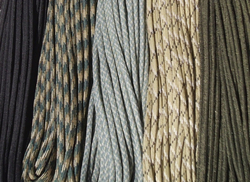 Subject: 10 ft of Paracord and it's uses. Ten feet of paracord in a survival situation is like gold. First off having any type of cordage is invaluable. The potential uses for paracord is almost limitless. In survival mode we are only limited by our own creativity. Paracord can be used for making nets, tie downs, making fishing hooks etc... One can utilize paracord for fashioning together tools to assist in your self-reliance and sustainment. Para cord can also be used to make a life saving tourniquet, pressure dressing for compression bandages. Ten feet of paracord with a seven strand fill sheath amounts to 70 ft of paracord guts. Plus the 10 ft of the outer shell. Giving you a combined total of 80 ft of usable material. In a survival situation having the ability to create tools is vital. Fashioning tools with the ability to secure or tie together instruments of the needed components invaluable. Para cord can serve many purposes such as fishing line. Assist with setting spring snare traps. Commonly used to make a primitive fire craft tool known as the bow drill or fire thong. As stated above the para cord and it's applications are limitless and only limited by your own creativity. Para cord is a main staple in survival should you have it to use. Having cordage is almost a survival requirement. Even in today's survival schools we teach how to generate cordage from natural materials. It's important to know how to make cordage or rope to be effective in the wilderness. People wear paracord survival bracelets or belts. The reason they wear these type of paracord fashioned items is all part of being prepared. People know and see the endless value that having paracord offers. I alway carry paracord due to the fact that it's strong. Can contribute to saving time, when time is of the essence. Limits your need to make natural cordage. In survival sometimes the easy way is the smartest way. Only as long as the easy way does not sacrifice safety of the individual or group. Paracord it's a tool in and of itself, it's a resource. Having paracord can help make other bushcraft tools that will lead you to or contribute too you own self-reliance, or perhaps rescue. One can watch endless videos on social video sites about the uses and applications of para cord. From jewelry to tools this military grade product is a life saver. The military uses this in today's modern era. This is a product that has staying power and is diverse in it's usefulness. Edible Tree Inner Bark - Cambium30/12/2014 Cambium is the thin inner bark of a tree and is loaded with nutrients. Outer bark has high levels of tannin, therefore not edible. Inner bark is a superb survival food when in the wilderness. You are able to eat this thin inner bark raw, however it's more easily digestible if boiled for a long period of time. Boiled into mush makes for a fantastic breakfast treat topped with maple sap or your favorite berries.
(Note: Do Not toss the boiled water; rather drink it as it's loaded with nutrients.) There are a number of tree species that offer edible cambium bark. It's always best to collect this food source in spring time. However you can collect it year round. Locations that you want to target for collection are as close to the ground as possible. Roots or young saplings are great parts of the tree to gather bark. You can use outer bark for medicinal purposes which I will cover later in this article. Types of trees that offer edible cambium are as follows. • Pines (Inner Bark and leafs loaded with vitamin C) Part of the Evergreen species. Vitamin C helps prevent scurvy which if you are vitamin C depleted you can die. Has long round needles. Bears cones that produce a tasty Pine Nut. Pine nuts are commonly used as salad topping. Spring is the best time to harvest nuts. • Willows (Comes in a variety of types) Identify by broad leafs that are toothed. • Tamarack (offers cones and has needles) • Maples (Sap is edible and sugary) This tree grows in a lot locations. You can draw the sap out by cutting a v-notch into to bark. Cut the notch lower on the trunk close to the ground. Must be boiled, before eating. • Slippery Elms (Has toothed leaves and grows in North America. • Birches (Outer Bark makes good roofing material, flooring, wind barrier, foot wear) you can tap the sap by cutting a v-notch. Also produces a sugary flavored treat. Must be boiled before eating. • Hemlocks (Not the same as the poisonous plant that bears the same name) Part of the Evergreen Species. Has distinct short, flat needles similar to the Spruce. • Basswood (Part of the Lime species) has leaves in the shape of a heart. • Poplars (found in northern territories) leaves are triangle in shape. • Spruce (Not only is the inner bark edible you can use the leaf to make vitamin C packed tea) has short flat needles similar to Hemlock. **sap producing trees such as Birch or Maple can be harvested daily. For larger volumes of sap collection tap two or more trees.** With most of these trees that you can eat the inner bark you can find some that produce gum or resin. If it is water soluble that indicates it's a gum and is loaded with sugar. If it's not water soluble, this indicates a resin. Resin is a fantastic fire starting aid, look for Fatwood in pine Forrest's. Do to high Turpen levels just a few shavings will catch a spark. Some people keep Fatwood in their survival kits. Tends to come from Pine trees. You can identify Fatwood by it's distinct oder. It smells of a concentrated Turpen which is the main ingredient of Turpentine. So basically it acts as an accelerant for fire starting and is all natural. Also is considered valuable and people collect it to sell for profit. **DO NOT INGEST FATWOOD** Poisonous Trees To Avoid Ingesting: • Hickories (Has a variety of species by territory. Only a few offer edible nuts or sap) Use extreme caution and positively identify species before ingesting nuts or sap. Hickories are great for smoke flavoring meats. • Cedars (Part of the Evergreen Species) very scented woods. This tree is mostly found in the Mediterranean and Himalayas. You can find Cedar in North America in northern territories. • California Laurel (North American Evergreen) Has a pungent odor. Tear drop shaped leaves with yellowish flowers. Has greenish to purple berries. Has a short tree trunk. • Oregon Myrtle (North American Evergreen) Has a pungent odor. Oval shaped leaves with yellowish flowers with purple berries. Has a short tree trunk. • Horse Chestnuts (Very Poisonous) Fingered leaves, white, yellow or pink colored flowers. Sticky buds, spiny shelled nuts. Similar to Buckeyes. DO NOT mistake this tree with the Sweet Chestnut it's leaves are thin and toothed with seed cases that are more prickly. • Buckeyes (Very Poisonous) Fingered leaves, white, yellow or pink colored flowers. Sticky buds, spiny shelled nuts. Similar to Horse Chestnut. • Laburnums (Yellow flowers and broad leaves) • Black Locust (Grows in North America) tear drop shape leaves with white flowers. Has dark gray bark and seed pods. • Moosewood AKA Moosebark (North American tree that is found in north eastern territories. Has white striped bark, tear drop shaped leaves. Bears winged fruit with yellow and greenish colored flowers. • Yews (Bears poisonous red berry like fruit) Part of the Evergreen Family, scaly bark that is flaky much like dead dry skin that's peeling. The needles are very dark green. ***Note*** See the similarities with each of the above listed trees? All have differences but some have commonality to one another. I cannot stress anymore how important it is to seek hands on instruction by a reputable botanist or survival instructors school. You eat the wrong thing you can develop health complications or even die. #DanShrigley #EdibleBark #Edible #InnerEdibleBark #Cambium #FatWood #Survival SHTF & TEOTWAWKI: What does it mean to you?30/12/2014  America's Survival Son is Daniel W. Shrigley America's Survival Son is Daniel W. Shrigley For those new on the scene to prepping, and survival here is the meaning or both hashtags. #SHTF = Shit Hits The Fan #TEOTWAWKI = The End Of The World As We Know It. Both relate to prepping which is a term for preparedness. Preparedness towards the goal of survival. Survival is a general term that covers many sub-categories. Self-reliance, bushcraft, wilderness survival, urban survival, bugging out, off the grid living, homesteading etc.. Back before Y2K, 1999 the fear was that a technology collapse was possible due to the pending new year and the date formats of computers. People began prepping for the unexpected chain of events that would transpire if the social infrastructure collapsed. People began stockpiling up on gold coins and silver. Weapons and ammo in large quantities. They began storing food, fuels and water. However prepping did not go mainstream during this time just yet. Y2K came and gone with little to no effect. Companies and Governments to precautions to avert the disaster. Y2K birthed the era of prepping that eventually went mainstream with the prediction of #TEOTWAWKI via 2012 and the Mayan Calendar ending on Dec 31, 2011. Again nothing happen on this date and life went on as normal. Then with the US deficit rising beyond record breaking numbers. People losing faith in our country's leadership and ability to ever balance the national budget. Fear of civil and economic disaster, forced the mindset for more and more people to take precautions needed to become Self-Reliant. The popularity of Survival and Prepper television programming became record breaking. The education and entertainment value flew through the roof. People were adopting preparedness more than ever in the history of the modern world. In the last several decades natural disasters of mega proportions started to unfold. More and more people became fearful of the unknown potential tragedy they could confront. School shootings, workplace violence and terroristic attacks both domestic and foreign. All these incident types brought with it more prepping by more people. Causing more of the population to explore preparedness as their only option to survive. The threat of war, flu pandemic, floods, earthquakes, wildfires, tornadoes, nuclear war, super volcanos erupting and other like disaster keep bringing more people to join the frenzy known as prepping. So in a nutshell, here it is: First things first, everyone should be prepared and have on hand the minimal life sustaining things needed in case of an emergency. Emergencies can be anything from natural to manmade disasters. However to take survival to the next level, one needs more than just inventory. Survival skills are needed to achieve self-reliance. The knowledge needed to sustain for extended periods of time. Immediately some critical skills needed might be as simple as CPR, Basic First Aid. This would cover self aid and buddy aid. The ability to defend yourself physically from an attacker with a form of self defense fighting style. Having training in hand-to-hand combat is smart. Having food and water stored for your family that will last 72 hours or much longer. For long term survival you will need shelf stable and long term storable foods. This includes medication and first aid kits. Survival kits are also highly encouraged. The next concern for a SHTF or TEOTWAWKI scenario may be security. You're ability to protect you and your family from hostile criminals or groups. Beyond having an inventory comes proper training with the correct use of your home defense weapons or firearms. Knowledge of primitive weapons construction will serve greatly too. Once the ammo runs out, you may find a need to fall back on primitive technology. This covers a wide variety of personal preferences. Here are a few tips on weapons/tools and their use. • Bow & Arrow • Clubs • Spears • Knives • Swords • Batons • Sling Shots • Firearms made in the privacy of one's garage or workshop. Just to name a few. First everyone needs to know safely how to use each weapon. Knowing properly the mechanical functions and safety procedures to all weapon types in your inventory. Practicing how to not only use safely but effectively. Second however nice it might be to have a large collection. In a SHTF scenario, everyone should carry the same caliber ammo as the assist in a ammo support situation. Example: If you all carried different types of weapons and ammo types for various calibers. If a fire fight when one runs out of ammo he or she is out of the fight completely. To avoid this by carrying the same calibers of firearms this allowed you to support one another with ammo crossover or exchanges. Some Preppers collect massive inventories and stockpile everything in their homes. I always thought that this was in part a failure in planning. First is hiding your inventory from those who wish to take it. If in a survival situation you might be forced to protect your inventory with lethal force. One potential failure I see with this is if your home is cordoned off and a larger force organizes and plans to raid your homestead will you be able to effectively defeat the larger force? I suggest you maintain 3 to 7 days supply for your home. Keeping the bulk of your inventory where you plan to Bug Out to in a geocache known only to you and your family members. Also never hide your inventory in only one or two places. I suggest multiple locations so if one cache is found you're not at a total loss. Also publicly advertising in social media or other such resources that your a Prepper as if you're proud of it and want to gain a certain level of respect for being known as one. This is a violation in your very own OPSEC. Nobody outside your immediate family or isolated group should ever know you are a Prepper. It's like holding up a huge sign "Come rob me if Shit Hits The Fan!" Also beware that if SHTF were to happen your localize community will be watching your habits. When you move, what you carry out or in with you as you come and go. If they are all without power yet you have lights. That being an indicator or sign you posses a generator can cause horrible consequences. While everyone else is starving and losing weight, becoming unhealthy yet you're not impacted shows you posses an inventory. Never keep your inventory in your house. Spread it out. Keep in mind that law enforcement, military could go house to house seeking to confiscate your firearms and ammo stockpiles. I urge you to consider geocache seriously as a method to protect your inventory. Only trusted members should know where geocaches are located. Also more valuable than food is water. You should consider cache of water or a secret water well as part of your SHTF plan. Survival skills not only for wilderness but all region specific environments you may find yourself traveling or living in will be a life savor. Urban survival skills are key especially if you are forced to remain or return to a built up area. My recommendation is once you relocate to your safe haven at all costs remain there if you can until you know things have improved or not elsewhere. Having knowledge on primitive survival skills will help to minimize the need for extensive inventories and give you freedom of maneuver carrying much lighter loads. So consider learning primitive survival and bushcraft skills. In a scenario of TEOTWAWKI you're basically trying to get away from bad people yet don't avoid good people. Remember there are more good people in our society than bad. Yet to be safe when you're not certain, avoid other people until you feel comfortable with them again. In a worse case situation it's important to remember that the average Bug Out type personality is running for the wilderness. This can pose life and death consequences especially for trigger happy personalities or their victims. It's my opinion that running to the wilderness might be like running into the middle of a civil war! That's the battlefield. Your best bet would be to seek refuge via a sailboat and head off to a remote location. Why you might ask do I feel this way? It's simple, over the last three years I have heard countless people state that if someone crosses their property border it's shoot first, ask questions later. This shoot first ideology seems to be running rampant with the extreme of the Preppers. What's smart, smart would be to eventually collect members and restructure communities together. Remember that in a TEOTWAWKI situation military either our own or foreign troops will be patrolling our streets. We will fall under a Marshal Law. So curfews will be in effect, you may also not be allowed to travel beyond boundaries set in place either. The fear of the unknown is the thing that has the biggest influence on Preppers. Nobody knows what's going to happen. I suggest that we focus on community and not individualism and the reward will be greater. Prepping is made up mostly of individualism rather than community. Strength in numbers is obvious. Criminals and combative groups will run in packs, so should the good citizens. Security comes in greater numbers. However the needs of the greater numbers grow as well. Sustainment for the members of your family or group will become center stage. Homesteading skills, farming and harvesting will be needed. How many of you know how to dispatch a slaughtered animal for food or clothing? When was the last time you planted a garden and harvested your garden? When was the last time you made your own ammo? Can you walk into the woods and pick out what plants are a viable food source or poisonous? Can you survive without electricity and gasoline? Actually you can survive, it may not be ideal but not so many decades ago our ancestors all used candles and oil lamps in the evening hours. We are simply spoiled now, try living two weeks with no running water or electricity. It's not fun, yet it can be done. Try and see how fast things become uncomfortable. First main concern will be toilets and flushing. Second will be the food in the refrigerator and freezer. Third concern may just be the Air Conditioner or Heater. Then sanitation will become a concern as well. It for some would seem easier to live outdoors than to worry about staying in a house with all the luxuries removed. If SHTF or TEOTWAWKI did happen do you have a plan? What would you do? Would you survive? Hope you enjoyed this article, please give me your comments in reply. "Know More, Need Less" -Daniel W. Shrigley • Be Prepared • Stay Alive • Thrive "In Survival Failure Is NOT An Option" -Daniel W. Shrigley Lost or Stranded30/12/2014 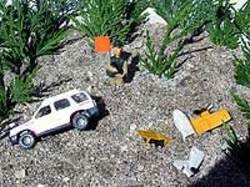 Do you know the difference between "lost" and "stranded?" Lost is not knowing where you are nor which way you should go. Stranded is [usually] knowing where you are but no one else seems to know where you are. Now according to most survival books, websites and search & rescue (SAR) teams... RULE # 1 - Before you take off and go anywhere you should tell someone (a) where you are going and (b) what time you will be back or be arriving at your final destination. Just in case you don't make it back or to your final destination within a certain time a search and rescue (SAR) party will know where to start looking for you. RULE #2 - Should you become lost or stranded in a disabled vehicle or you're a survivor of a plane crash, it's best to remain with the vehicle or plane. As it will be easier for a SAR party to find you in a stationary position than to look for a moving person or a group of people who have no idea where they are going. But if there's no vehicle or plane and you are on foot and you have no idea where in the hell you are or which way you should go. Then again, it's best to stay where you are as it will be easier for a SAR party to find you in a stationary position then to try to look for you wandering around aimlessly not knowing where in the hell you are going. But if you broke RULE # 1 - Failed to tell someone where you are going before you took off.. Then you can skip RULE # 2 and proceed directly to RULE # 3 - DON'T PANIC & LOSE YOUR HEAD, S.T.O.P ! Stop moving, sit down and relax, think where you may have screwed up, Observe your surroundings and try backtracking a little bit to see if you can recognize the terrain. And if you don't, sit down, take a deep breath and admit to yourself... "Well it looks like I'm lost, what should I plan to do next?" Well for starters you should listen up for signs of civilization. Such as listening for sounds of vehicles, trains, church bells, factory noise, etc that will give you a general sense of direction as to which way is civilization. But if you don't hear anything, then look around and proceed to the nearest and highest piece of ground and from there look for buildings, towns, church steeples, roads, railroad tracks, fences, power lines, telephone lines, etc that will lead you back to civilization. If there's no high ground then climb the nearest and tallest tree. But again if you don't see or hear any signs of civilization but you see a stream, creek or river, then follow that instead. As it will not only provide you a source of water for drinking but will most likely lead you back to civilization or to some trails or roads that will get you back to civilization. But should you be on the move and you don't see or hear anything that can help guide you back to civilization and the weather starts to change, the temperature begins to drop and or darkness is quickly approaching. Then it's best to stop and stay where you are for the night and begin building a shelter and getting a fire going before it's too late than to risk getting wet, cold and not seeing where you're going. And as you read on you will not only learn from me how to build a shelter and start a fire but to survive, thrive and to teach others how to do it too. SURVIVAL TIPS: Field Hygiene & Five F's30/12/2014 One of the most important parts for consideration with any form of camping or survival; Hygiene is a must.
• Five F's 1.) Fingers 2.) Flies 3.) Food 4.) Fluids 5.) Fecal Matter The above mention are the considerations a person or group must respect and correctly manage. It's very important to always keep clean and segregate waste from living space and water sources. We all poop and urinate. We all need to wash and brush our teeth. Never relieve yourself within 100 ft of your camp. Always wash your hands after handling raw materials, foods, waste or plants. This simple practice will prevent disease, and infections. Never corrupt a water source with human waste or human byproducts. Burn or bury unused food waste to avoid unwanted predatory or scavenging animals. A good practice is bury food waste 1/2 Mile away from your campsite. This will help to minimize cougars, wolves, bears, and other like wild animals from encroaching your encampment. Hanging food 16 feet or above from a rope will save your next meal from being stolen by animals. Cryptosporidium & Giardia are parasites that are microscopic. Two of the major concerns for potential drinking water. All water must be treated or boiled. My preferred method is boiling by fire (Conduction) or Solar Boiling (Radiation). Convection is the third form of heat transfer used in camping or survival to make jerky or smoked meats. Also to heat shelters. Hygiene also includes washing tools or pots & pans. Bad hygiene will always attract what you do not want; Animals or flies. Dry wood such as mesquite when burned will deliver a smoke that Mosquitos and flying insects don't like. It also is good for masking the smell of food. Animals most generally don't associate smoke that smells pleasing to human noses as a signal for food. Animals by instinct associate smoke and a danger and will avoid at great lengths most generally. It's important to remember that washing hands, face, or head should be done only with treated or boiled water. Giardia & cryptosporidium can enter your body by ears, eyes, nose and mouth. Wash your tools, pots & pans with treated water. Don't Be An Individual Be A Nation6/12/2014  One Nation Under God! USA One Nation Under God! USA My take on this is be prepared for anything and don't focus on only isolated crisis. The best prepared are those that take precautions based on common sense. You should be as prepared for surviving in the wilderness as you would if lost or stranded or a Solar Flare, Super Volcano or Societal Collapse. The smart person prepares along the lines of basic necessities and then expands in to comfort, security and specialized self reliance items. We have more of a chance to suffer from weather related catastrophe than any other type of event. My advice is just be prepared with arming yourself with education and appropriate inventories. Never stock bulk inventory, always break up caches in multiple storage or Geocaches to limit absolute inventory loss. Never rely on one plan, always have alternate plans and give yourself the freedom of maneuver. If you have a bug out plan, create two additional plans for Egress (Escape/Exit/Fallback) and seek a safe haven. This video talks about Solar Flares and #TEOTWAWKI or #SHTF the presenter speaks about Millions dying and tries to instill fear. Listen my friends, if you're prepared with the ability to protect your family and property but operate with the ideals of community and infrastructure rebuilding we will all survive. We as Americans are resilient and will bounce back as we always do, we always pull together in times of crisis. That being said we need to stick together as a people versus become individualized! "Don't Be An Individual Be A Nation" ~Daniel W. Shrigley http://www.blackoutusa.org/vsl/index.php #Blackoutusa #Survival #SolarFlares #DanShrigley #NoFearPrepare Archives
June 2023
|
All Rights Reserved, Copyright © 2012 - 2022 Survival Extreme Catalog Inc. All Rights Reserved, Copyright © 2012 - 2022 Survival Trek Escape. All Rights Reserved, Copyright © 2012 - 2022 Survival Talk Radio.
